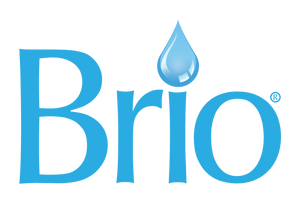As the heart of the home, the kitchen plays a pivotal role in our daily routines and our environmental footprint. Creating an eco-friendly kitchen isn’t just about following trends – it’s about making a positive impact on our planet.
The modern kitchen is much more than just cupboards and cookers – it’s where you sit, work, chat and eat. From energy-efficient appliances to sustainable materials and zero-waste practices, there are lots of ways to make your kitchen kinder to the planet while still maintaining functionality and style. Here are some tips on how to create an eco friendly kitchen.
Eco-conscious kitchen appliances
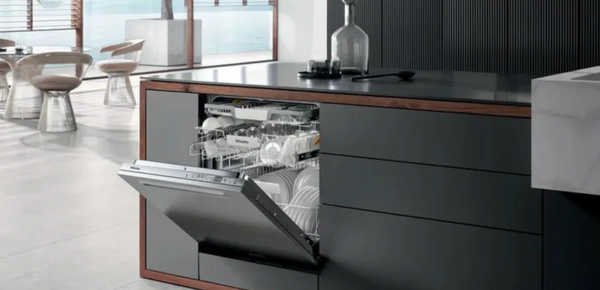
One of the key components of an eco-friendly kitchen is the use of energy-efficient appliances. From smart refrigerators to induction cooktops and water-saving dishwashers, there are numerous options available to help minimize energy consumption and reduce environmental impact. Here some to consider:
- Dishwasher: a water-saving dishwasher, for example, is highly energy efficient, like this Miele G 5266 SCVi SF, which will cost less in the long term. It uses far less water than average: 625.56 gal/year compared to the average of 989 gal/year. That means you’re saving 363.44 gal/year over the average washer, using about 37% less water.
- Cooktop: swap your gas stove for an induction one for a more energy-efficient outcome.
- Fridge-freezer: invest in a good-quality fridge not only to help with bills, but to keep food fresher for longer.
Energy-efficient options for your kitchen
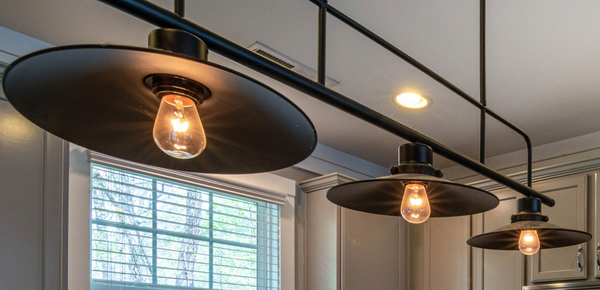
In addition to eco-conscious appliances, there are other ways to enhance the energy efficiency of your kitchen. From LED lighting and Energy Star-rated appliances to optimizing natural lighting and ventilation, small changes can make a big difference in reducing energy consumption and creating a more sustainable kitchen environment.
Smart lighting
Smart lighting doesn’t just mean beautiful switches and dimmable bulbs. You can personalize your kitchen lights to turn on and off at certain times of the day, adjust them with the seasons or make them switch off automatically when not in use. Energy efficiency you’re in control of.
LEDs
LED lighting is efficient, long-lasting and low maintenance. Because of the bulb’s long service life, the replacement rate and disposal rate are lower, while fewer luminaires need to be produced.
Natural lighting and ventilation
Prioritize natural lighting and adequate ventilation. Well-lit spaces with proper airflow create a pleasant and comfortable cooking environment. You could also consider using lighting that affects the body’s circadian rhythm – our natural sleeping and waking cycles. Most of us spend 90% of our lives under artificial light. Circadian lighting mimics the subtle color changes of natural light, and can make a massive difference to well-being.
Energy Star products
Energy Star products are the same or better than standard products, only they use less energy. To earn the Energy Star, they must meet strict energy-efficiency criteria set by the U.S. Environmental Protection Agency or the US Department of Energy.
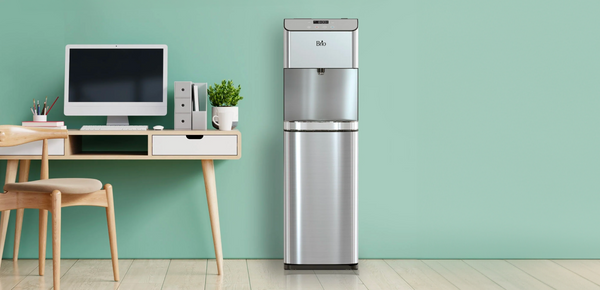
The Brio Moderna Bottom Load Water Cooler is Energy Star approved. This energy-efficient appliance means you’ll never have to buy bulky pallets of single-use water bottles again.
Lower environmental-impact materials
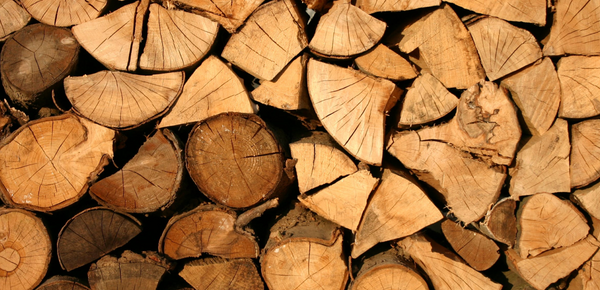
The move toward a plastic-free future is under way and this trend is extending to all aspects of our interiors as new innovations mean uncontrived and natural materials are gaining in popularity.
Pure concrete, natural stone and timber are the most sustainable options available, and if looked after, will age well and gain in character. Step into a greener kitchen with these sustainable surfaces and flooring options:
- Natural stone: Soft and cool to the touch, marble will give you a lifetime of beauty. If you can’t stretch to marble, an alternative might be granite, soapstone, quartz and quartzite.
- Wood: Wood can last indefinitely and brings warmth and character to your kitchen space. Alternatives include bamboo worktops, fast-grown processed timbers such as eucalyptus and palm wood or man-made composites such as Paperstone, which is made of recycled paper and non-petroleum resin and resembles slate.
- Copper: Hard-wearing and ever-changing, this material is perfect as the centerpiece worktop for a hard-working family kitchen.
- Ceramic: innovations mean that porcelain is the most hard-wearing material in terms of heat and scratch resistance, but it’s incredibly expensive.
- Concrete: Concrete is perfect for kitchens as it’s durable, long-lasting, and made from locally sourced materials. However, there is an element of unsustainability with concrete because the production process uses a lot of energy. It is porous and must be sealed to prevent staining, and some sealants may contain toxic volatile organic compounds (VOCs).
Adopt a zero-waste mindset

From reducing single-use plastics to repurposing kitchen scraps, you can make a difference, one conscious choice at a time. Here’s how:
Ditch single-use plastics
According to the Washington Post, studies have predicted that by 2050, there will be more plastic than fish in the ocean. Although convenient, single-use plastic products are among some of the worst pollutants on the earth. Step by step, you can work to reduce your own plastic waste:
- Replace plastic lunch bags with biodegradable options.
- Invest in metal straws.
- If you’re having a party, use bamboo cutlery and paper plates, then recycle them.
- Tote a reusable cloth bag to the grocery store.
- Swap cleaning products in plastic bottles for recycled or glass bottles that can be reused and refilled.
- Replace single-use plastic wrap with beeswax wrappers to preserve food.
- Use glass Kilner jars to store food, reducing the need for foil, wrap and resealable plastic bags.
- Buy cleaning bottles, kitchen sponges and brushes and even gloves made from 100% plant-based or biodegradable materials.
Grow your own produce
Gardening is the perfect activity to fill your spare time and get a delicious reward out of it. And growing your own fruits and veggies is another great way to reduce food waste and live an eco-friendly lifestyle.
Commercial produce is often plagued with pesticides and chemicals to make them last longer on store shelves. During cultivation, these harmful pesticides and pollutants seep into the ground and create contaminated soil. Through gardening, or even tending a window box of salad leaves, you’ll spend less on groceries.
Compost food waste
Composting involves taking food scraps and other organic waste and turning it into sustainable material to add to the soil to help plants grow. 30% of compostable goods get thrown away into landfills where they take up space and create toxic chemicals that are detrimental to our planet.
In a small plastic bag or tin, you can combine dead leaves, twigs, grass clippings, vegetable waste, fruit scraps, and coffee grounds. Add water to your mixture to help break down the organic material. From anywhere between two months and two years, when your mixture turns brown and moist, you’ll be able to use it in your garden.
Shop local
Shopping locally is a great way to ensure you’re doing your part to make the world a more sustainable place.
Buying from local farmer’s markets, co-ops, or anywhere else that reduces the distance from farm to table, will greatly decrease the harmful gasses it takes to transport tons of food to corporate grocery stores. Local farmer’s markets are filled with options that will make you eat fresher, healthier, and help you discover new types of food.
By investing in energy-efficient appliances, choosing eco-friendly materials, and adopting zero-waste habits, you can make a positive impact on the planet while enjoying a stylish and functional kitchen space. Together, let’s build a greener future, one kitchen at a time.
